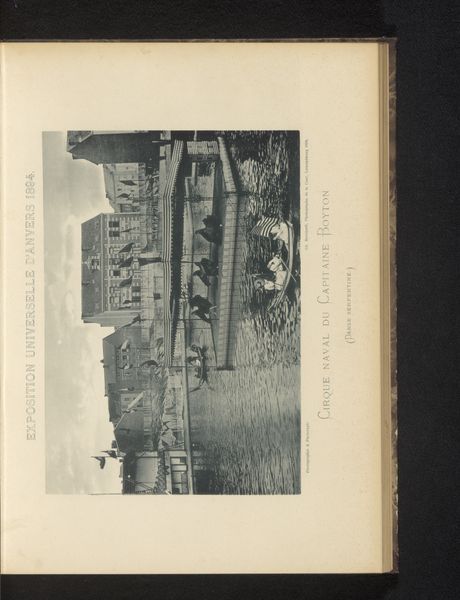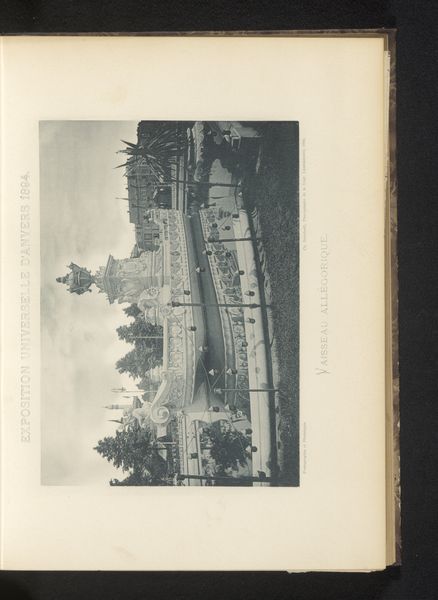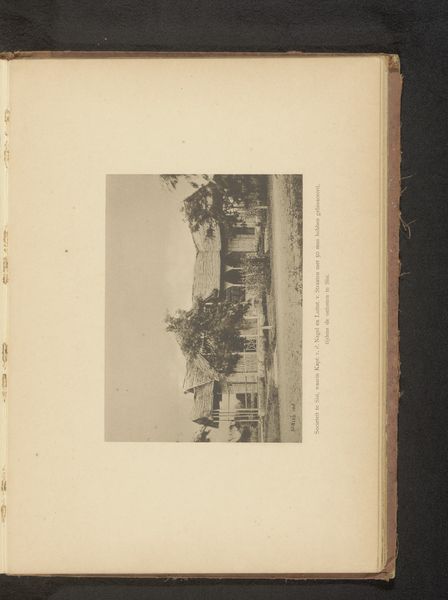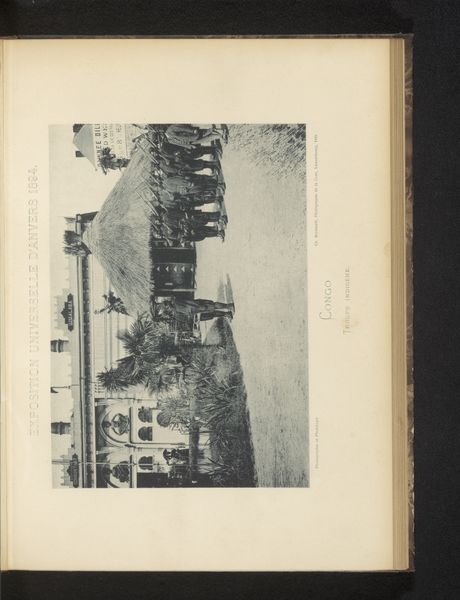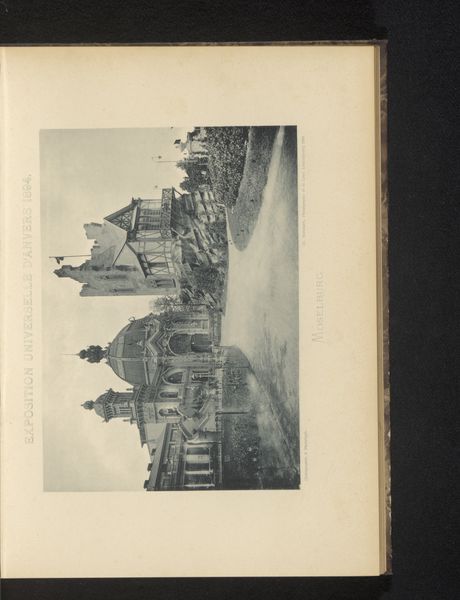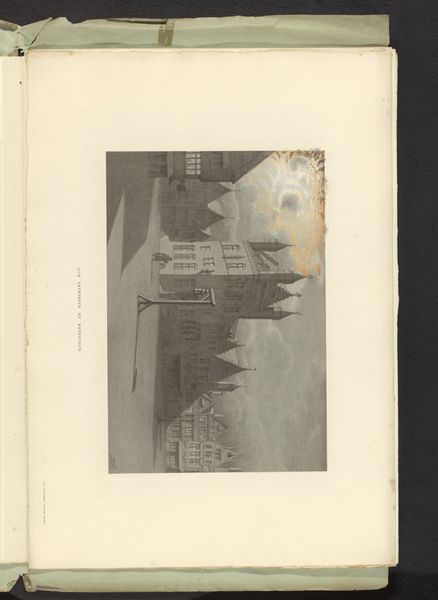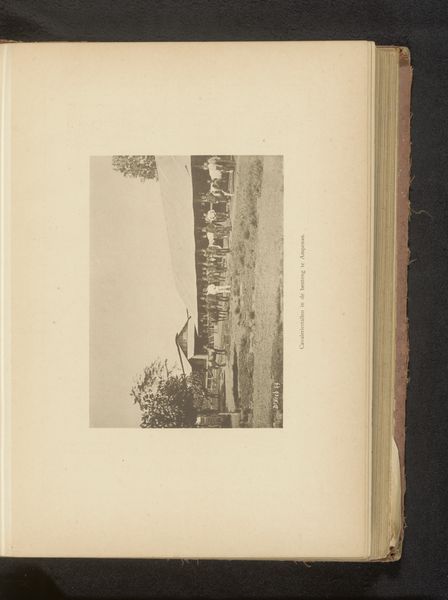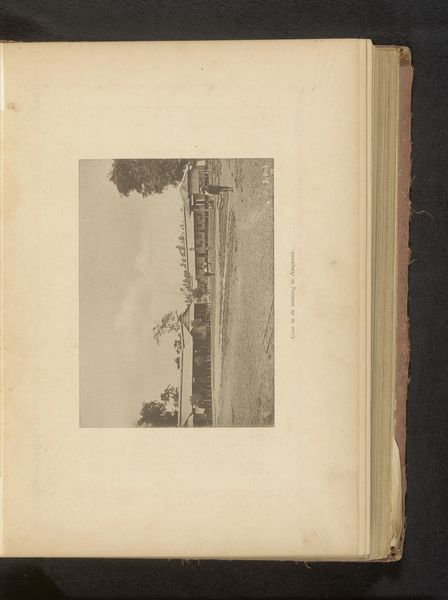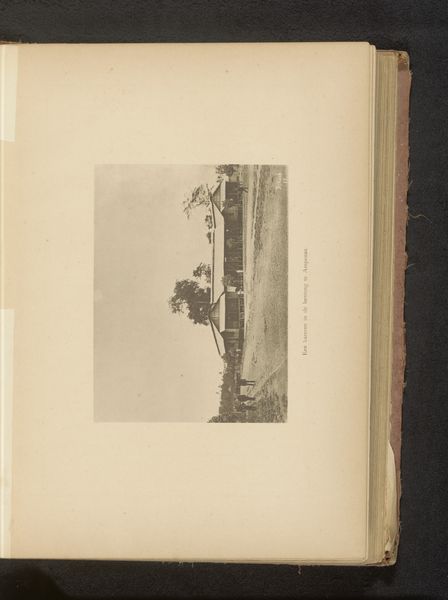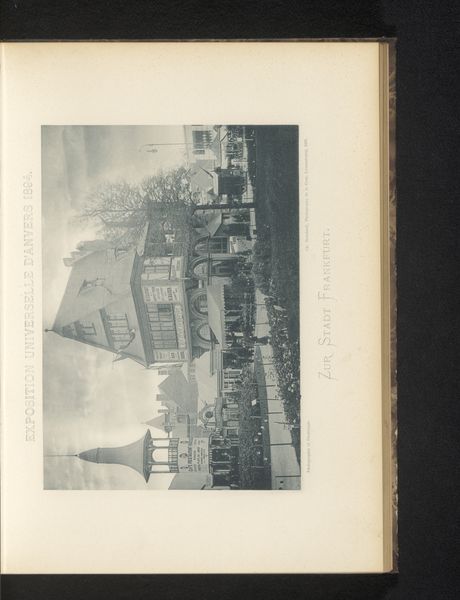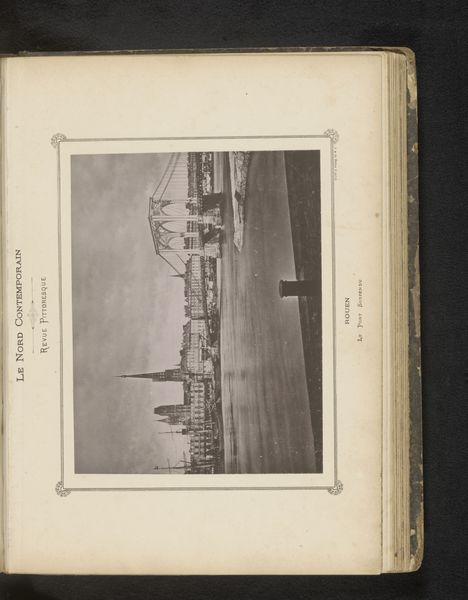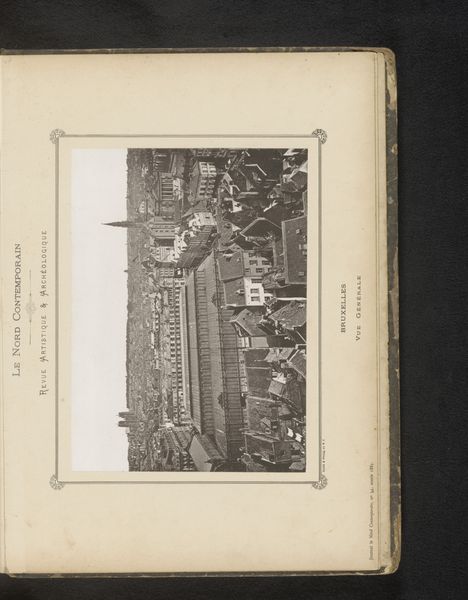
Gezicht op een nagebouwd Congolees dorp op de Wereldtentoonstelling van Antwerpen in 1894 1894
0:00
0:00
print, photography
# print
#
landscape
#
photography
#
orientalism
Dimensions: height 151 mm, width 216 mm
Copyright: Rijks Museum: Open Domain
Curator: This fascinating photographic print by Charles Bernhoeft captures a view of the replicated Congolese village at the 1894 World’s Fair in Antwerp. The image transports us back to a time of immense cultural exchange, albeit one viewed through the skewed lens of colonialism. Editor: The mood is unsettlingly serene, isn’t it? The placid water reflecting what looks like traditional dwellings… but those aren't organic outgrowths of the landscape, are they? It all seems carefully constructed, deliberately… stagy? Curator: Absolutely. These "human zoos," as they were sometimes called, were shockingly common features of World’s Fairs, serving as a display of colonial power and, frankly, a gross misrepresentation of Congolese life and culture for a European audience. The exhibit embodies the politics of the era. Editor: You can see the iconography of empire laid bare. The water, probably meant to symbolize the Congo River, mirrors the constructed village; it’s almost as if the builders were keen on highlighting a perfect "copy". Were they trying to claim equivalence—a parallel civilization? Curator: Perhaps, or even more insidiously, dominance through mimicry and control. It reinforced the idea that Europe could "civilize" other parts of the world. Photography, at the time, added another layer, giving supposed scientific backing to such views. Editor: And what about the light, the starkness? In an allegorical reading, light represents knowledge, control, and surveillance, all being projected upon this dark “Congo”. But there's a cognitive dissonance: knowing the image is taken within Belgium challenges a pure interpretation. What "knowledge" are they conveying to each other about the Congo? Curator: Exactly. The entire display functions as a performance, solidifying societal beliefs about race and civilization, and this image served to circulate and normalize these skewed perspectives. These aren’t isolated incidents; they were integral to reinforcing colonialism's hold on the public imagination. Editor: It seems a grim undertaking when viewing such a dark record, however understanding those intentions and the impact this image can have on future generations creates value from such a distasteful exhibit. It is through our understanding and remembrance we move forward. Curator: I agree. This photograph, while beautiful in a formal sense, serves as a chilling reminder of a past we must continually reflect upon and critique.
Comments
No comments
Be the first to comment and join the conversation on the ultimate creative platform.

